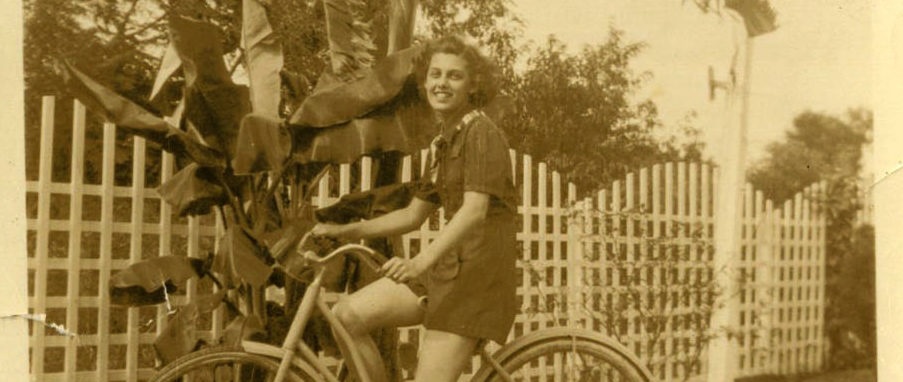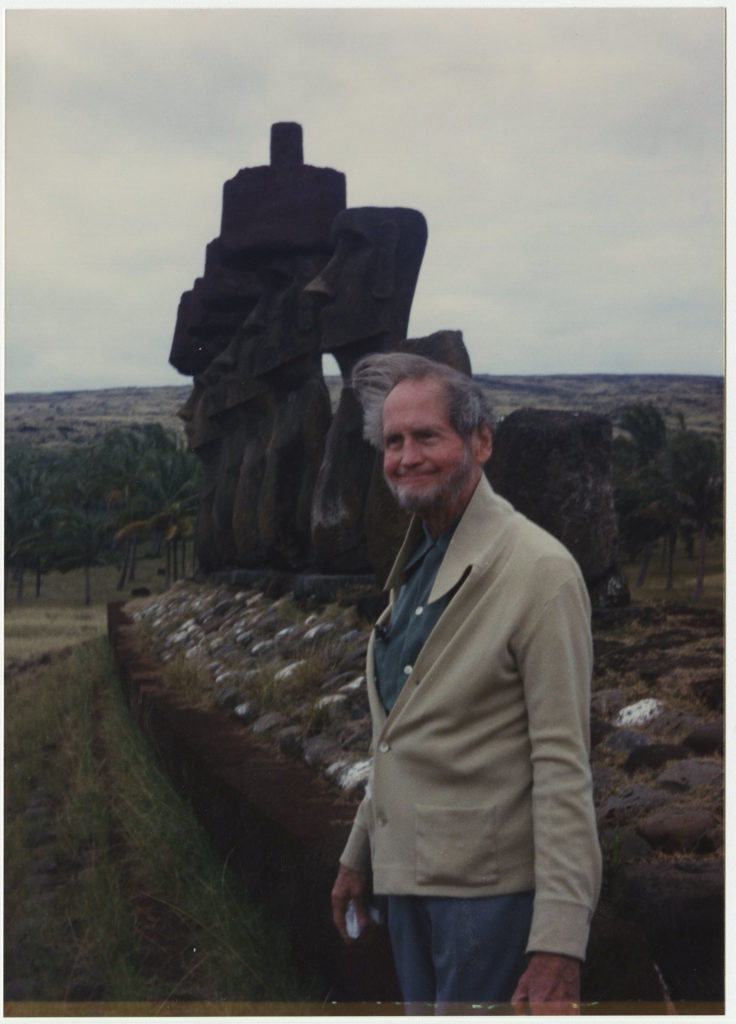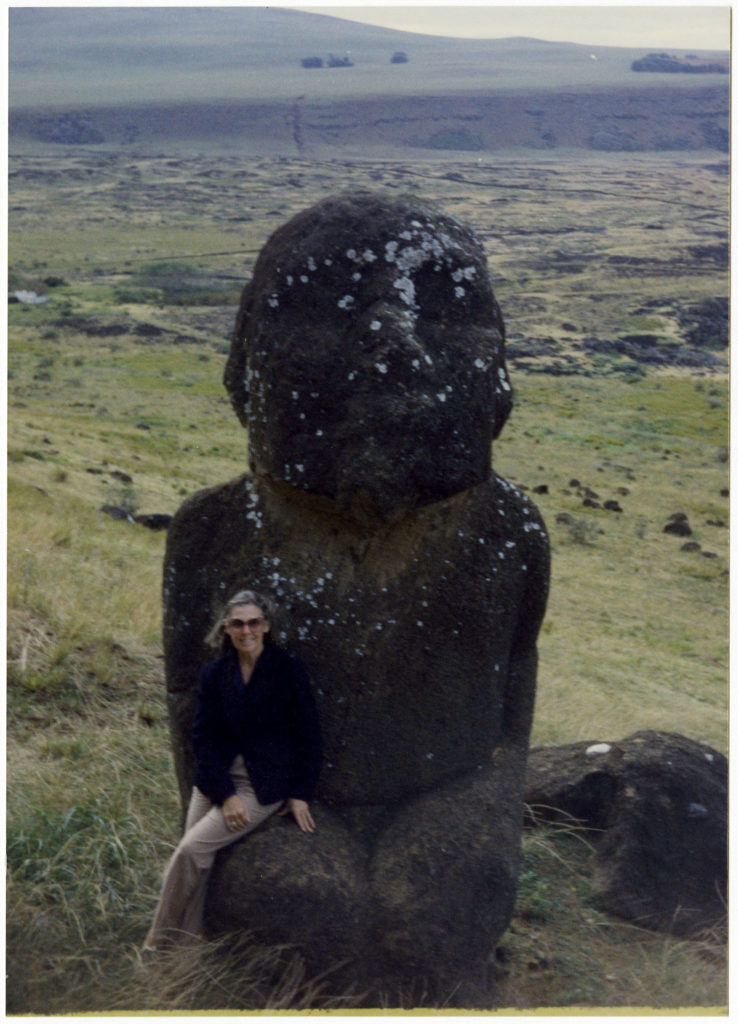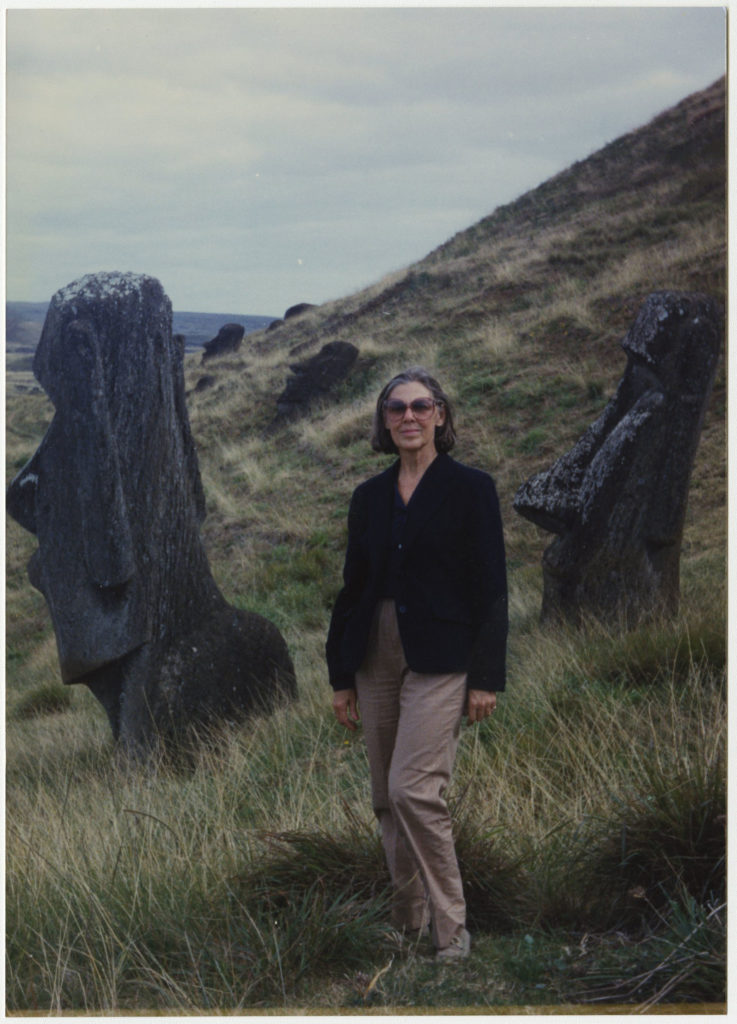In this journal, Sybil’s travel writing is developing to include more detailed imagery and emotion. There was much excitement even before take off. “Our curiosity about Easter Island had been aroused for years by National Geographic travel articles, geography books, the Thor Heyerdahl expedition and a recent Jacques Cousteau television special. Each new sight of the huge monolithic stone figures standing on a slope further tantalized our travel appetites.”
Easter Island, also called Te Pito O Te Henua or Rapa Nui, is an island completely surrounded by the ocean, completely treeless. This island’s main attraction is over 900 large statues called Moai, created during the 13th-16th centuries. While walking on the shore Sybil compares the experience to Robert E. Howard’s poem Easter Island. Sybil also includes a short but comprehensive description of the officials who uncovered these statues and how they discovered the method of creating such statues.
While on this trip, Sybil and Cliff are paired with a local guide, Charley, who tells the stories of the past of the island, how the island was settled, disputes between natives who lived on the island, and outsiders who came to the island for excavation and historical discovery, most of which Sybil records in her journal.
Sybil uses the words of Father Sebastian, a scientist and author of Island at the Center of the World to describe the emotion felt leaving the island, “Leaving Easter Island is unlike leaving any other place in the world. Why? Because all visitors known in their hearts that they will never come this way again. It is, I think, the saddest parting of all.” After parting from the “loneliest island in the world”, Sybil would talk admiringly of her travel to the island very often, but never returned for a second visit.



